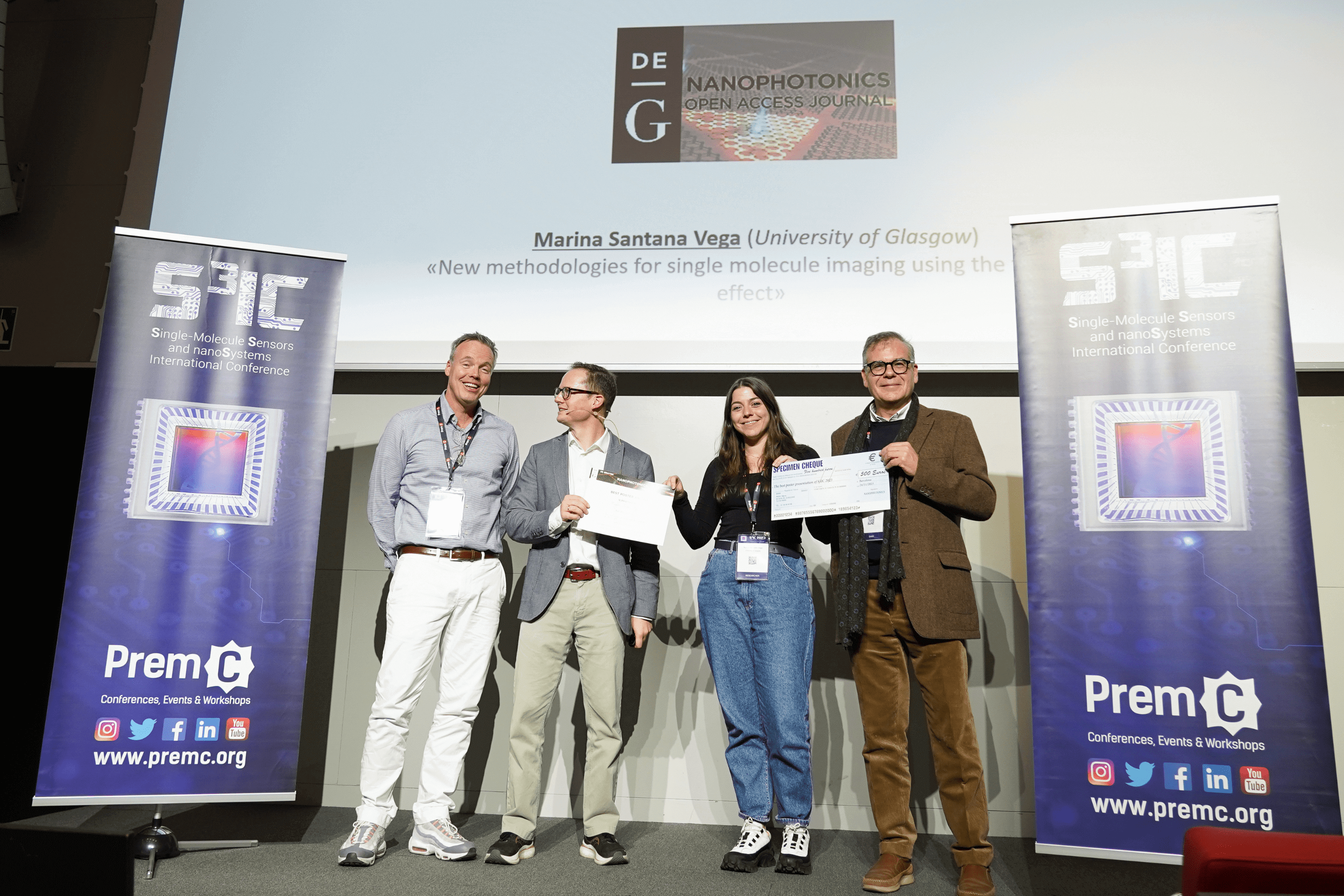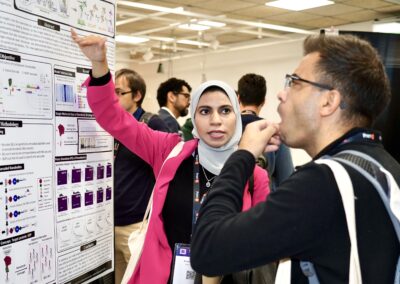Single-Molecule Sensors and NanoSystems International Conference – S3IC 2023
Sensor systems exhibit extraordinary sensitivity for detecting physical, chemical, and biological entities at the micro/nanoscale. The detection and analysis of molecules on miniature devices that have many possible applications in health, environment, analysis, and security is particularly exciting. A new class of label-free micro and nanosensors is starting to emerge allowing us to observe dynamic processes at the single molecule level directly, with unprecedented spatial- and temporal resolution and without significantly affecting the natural and functional movements of the molecules. Micro- and nanosensors by virtue of their small interaction length probe molecules over a dynamic range often inaccessible by other techniques. Their small size enables an exceedingly high sensitivity, and the application of quantum optical measurement techniques can allow us to approach or surpass classical limits of detection. Advances in optical and electrical measurement methodology, laser interferometry, quantum optics, micro/nanofluidics, control of molecules and reactions at the nanoscale, DNA origami/synthetic molecular machines, in-vivo and wearable sensing materials, all contribute to the rapid progress of the field of Single Molecule Sensors and nanoSystems. It is this convergence of previously often disparate fields that is accelerating the advancements in micro and nano-sensing.
This conference will bring together researchers in the rapidly advancing field of Single Molecule Sensors and nanoSystems on November 22-24, 2023 in Barcelona. The conference focusses on the most recent advances in micro and nano-sensing techniques that have either demonstrated single-molecule detection or that claim single-molecule detection capability on sensor chips in the longer term.
TOPICS
COMMITTEE
CHAIRMAN
Prof. Frank Vollmer
University of Exeter, UK
CO-CHAIRMAN
Prof. Felix Ritort
University of Barcelona, Spain
SPECIAL PLENARY SPEAKER
Prof. Jim Al-Khalili
University of Surrey, UK
PLENARY SPEAKERS
Prof. Warwick Bowen
University of Queensland, Australia
Prof. Carlos Bustamante
University of California, Berkeley, USA

Prof. Nynke Dekker
Technical University of Delft, Netherlands
Prof. Hendrik Dietz
Technical University of Munich, Germany
Prof. Jens Gundlach
University of Washington, USA
Prof. Achillefs Kapanidis
University of Oxford, UK

Prof. Stefan Maier
Monash University, Australia & Imperial College, UK
Prof. Martin Plenio
Ulm University, Germany
Prof. Romain Quidant
ETH Zürich, Switzerland

Prof. Aleksandra Radenovic
Ecole Polytechnique Fédérale de Lausanne, Switzerland
Prof. Vahid Sandoghdar
Max Planck Institute for the Science of Light Erlangen, Germany
Prof. Vlatko Vedral
University of Oxford, UK
INVITED SPEAKERS
Dr. Clarice Aiello
Quantum Biology Tech (QuBiT) Lab, United States
Prof. Timo Betz
Georg August University Göttingen, Germany
Dr. Francesco De Angelis
Italian Institute of Technology, Italy
Prof. Massimiliano Esposito
University of Luxembourg, Luxembourg
Dr. Eugene Kim
Max Planck Institute of Biophysics, Frankfurt am Main, Germany
Prof. Gabriel Gomila Lluch
University of Barcelona, Spain
Prof. Peter Maurer
University of Chicago, USA
Prof. Francisco Monroy
Complutense University of Madrid, Spain
Prof. Lene Oddershede
Nat-Tech, Novo Nordisk Foundation

Prof. Erik Schäffer
University of Tübingen, Germany
Prof. Giovanni Volpe
University of Gothenburg, Sweden
FULL PAPERS PUBLICATION
All authors with accepted abstract will be able to submit the corresponding full papers for publication in the conference proceedings. More opportunities will be announced soon.
We are delighted to announce a partnership between the De Gruyter, peer-reviewed, open access journal Nanophotonics (IMPACT FACTOR: 7.923) and the Single-Molecule Sensors and NanoSystems International Conference 2023 (S3IC 2023).
Authors of the selected abstracts submitted to the Conference are encouraged to submit their paper to form part of a Special Collection in the Nanophotonics journal. The publication fees will be waived for the 3 best abstracts.
Important deadlines
- Submission of manuscripts start: November 30, 2023 (all authors will be informed by email)
- Submission of manuscripts end: March 30, 2024
For full details on how to submit your paper to the journal, please refer to the Instructions for Authors.. When submitting your paper, please indicate that the paper is to be considered for this Special Collection. All papers will be peer-reviewed following the usual review process and criteria of the Nanophotonics journal.
Nanophotonics looks forward to receiving your submissions and providing an outlet for your research.
CONFERENCE AWARDS

The journal Biosensors (MDPI) is pleased to offer a prize to the best oral presentation of S3IC 2023. The Prize includes:
[icon name=icon_ribbon_alt] A certificate
[icon name=icon_ribbon_alt] A € 500 cash prize
The award goes to Cuifeng Ying (Nottingham Trent University) for her talk «Protein Conformational Dynamics by using Optical Nanotweezers»


The journal Sensors (MDPI) is pleased to offer a prize to the best poster presentation of S3IC 2023. The Prize includes:
[icon name=icon_ribbon_alt] A certificate
[icon name=icon_ribbon_alt] A € 500 cash prize
The award goes to Alejandro Colchero (University of Barcelona) for his poster «Deciphering the Mechanisms of λ-DNA Translocation through Nanopipettes»

The journal Applied Sciences is pleased to offer a prize for the best poster presentation of S3IC 2023. The Prize includes:
[icon name=icon_ribbon_alt] A certificate
[icon name=icon_ribbon_alt] A € 500 cash prize
The award goes to Ghada Mansour (ESPCI Paris, Université PSL) for her poster «Multiplexing nanobody kinetics measurements at the single-molecule level»


The journal Nanophotonics (De Gruyter) is pleased to offer a prize for the best poster presentation of S3IC 2023. The Prize includes:
[icon name=icon_ribbon_alt] A certificate
[icon name=icon_ribbon_alt] A € 500 cash prize
The award goes to Marina Santana Vega (University of Glasgow) for her poster «New methodologies for single molecule imaging using the fluorous effect»

GROUP PICTURE
















